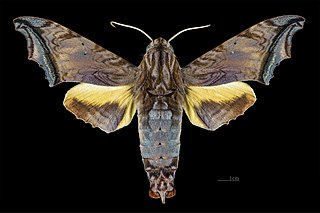
Ponginae, also known as the Asian hominids, is a subfamily in the family Hominidae. Once a diverse lineage of Eurasian apes, the subfamily has only one extant genus, Pongo (orangutans), which contains three extant species; the Sumatran orangutan, the Tapanuli orangutan and the Bornean orangutan. All three species are listed as critically endangered by the International Union for Conservation of Nature (IUCN).
The Agag gerbil is distributed mainly in southern Mauritania to northern Nigeria and Sudan. IUCN lists the junior synonyms Gerbillus cosensi and G. dalloni as critically endangered.

Kemp's gerbil is a species of rodent. Mammal Species of the World considers G. kempi and G. gambianus to be synonyms, however the IUCN has assessed each taxon as were they different species.

The gracile naked-tailed shrew is a species of mammal in the family Soricidae. It is found in Burundi, Gabon, Kenya, and Uganda. Its natural habitat is swamps.

The Ugandan lowland shrew is a species of mammal in the family Soricidae. It is found in Kenya and Uganda. Its natural habitats are subtropical or tropical swamps and subtropical or tropical moist montane forest. It is threatened by habitat loss.

The Mount Cameroon forest shrew is a species of mammal in the family Soricidae endemic to Cameroon. Its natural habitat is subtropical or tropical moist montane forests.

Helicia is a genus of 110 species of trees and shrubs, constituting part of the plant family Proteaceae. They grow naturally in rainforests throughout tropical South and Southeast Asia, including India, Sri Lanka, Indochina, Peninsular Malaysia to New Guinea and as far south as New South Wales.
Matelea orthoneura is a species of plant in the family Apocynaceae. It is endemic to Ecuador. Its natural habitat is subtropical or tropical moist lowland forests. It is threatened by habitat loss.
Pentagonia involucrata is a species of plant in the family Rubiaceae. It is endemic to Ecuador.
Pentagonia peruviana is a species of plant in the family Rubiaceae. It is endemic to Ecuador.
Pentagonia rubiflora is a species of plant in the family Rubiaceae. It is endemic to Peru.

The World's 25 Most Endangered Primates is a list of highly endangered primate species selected and published by the International Union for Conservation of Nature (IUCN) Species Survival Commission (SSC) Primate Specialist Group (PSG), the International Primatological Society (IPS), Global Wildlife Conservation (GWC), and Bristol Zoological Society (BZS). The IUCN/SSC PSG worked with Conservation International (CI) to start the list in 2000, but in 2002, during the 19th Congress of the International Primatological Society, primatologists reviewed and debated the list, resulting in the 2002–2004 revision and the endorsement of the IPS. The publication was a joint project between the three conservation organizations until the 2012–2014 list when BZS was added as a publisher. The 2018–2020 list was the first time Conservation International was not among the publishers, replaced instead by GWC. The list has been revised every two years following the biannual Congress of the IPS. Starting with the 2004–2006 report, the title changed to "Primates in Peril: The World's 25 Most Endangered Primates". That same year, the list began to provide information about each species, including their conservation status and the threats they face in the wild. The species text is written in collaboration with experts from the field, with 60 people contributing to the 2006–2008 report and 85 people contributing to the 2008–2010 report. The 2004–2006 and 2006–2008 reports were published in the IUCN/SSC PSG journal Primate Conservation,, since then they have been published as independent publications.

Nyceryx stuarti is a species of moth in the family Sphingidae.

Legousia is a genus of flowering plants in the family Campanulaceae, native to Europe. Species in the genus used to be placed under genus Specularia along with plants in genera Triodanis and Heterocodon as well as some species in genus Campanula. However, the division has been confirmed evolutionarily comprehensive by a Campanulaceae phylogeny based on DNA molecular evidence.

Pentagonia is a genus of about 34 species of plants in the family Rubiaceae. Pentagonia species are native to Central America and northern South America, and grow in moist tropical forests below 900m.

Condamineeae is a tribe of flowering plants in the family Rubiaceae and contains about 305 species in 31 genera. Most genera are found in Central and Southern Tropical America, but a few occur in Southeast Asia.
Amycolatopsis rifamycinica is a species of Gram-positive bacteria in the genus Amycolatopsis. It produces the rifamycin antibiotics, which are used to treat mycobacterial diseases such as tuberculosis and leprosy. Amycolatopsis rifamycinica has been renamed several times. When it was first isolated from a French soil sample in 1957, it was identified as Streptomyces mediterranei. In 1969, the bacterium was renamed Nocardia mediterranei because its cell wall was thought to resemble that of Nocardia species. The bacterium was renamed Amycolatopsis mediterranei in 1986 after finding that it is not susceptible to Nocardia phage and has a cell wall that lacks mycolic acid. Finally, in 2004, it was renamed Amycolatopsis rifamycinica based on 16S ribosomal RNA sequencing.










